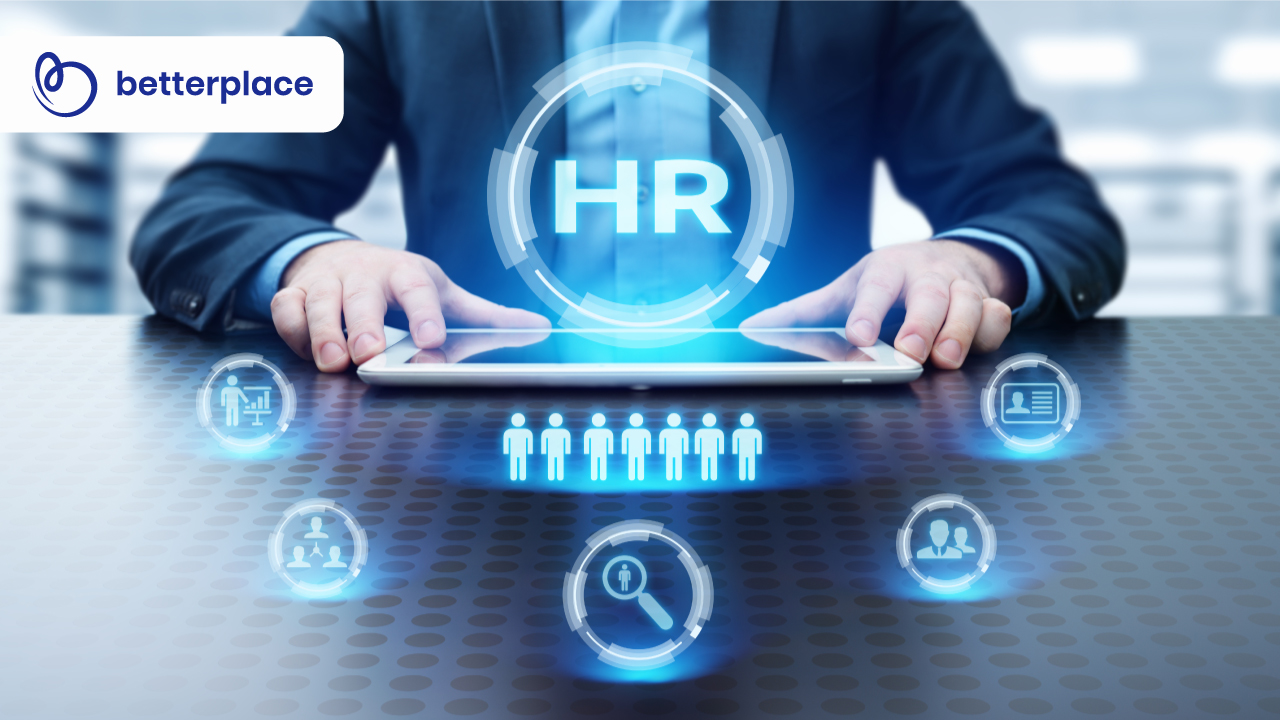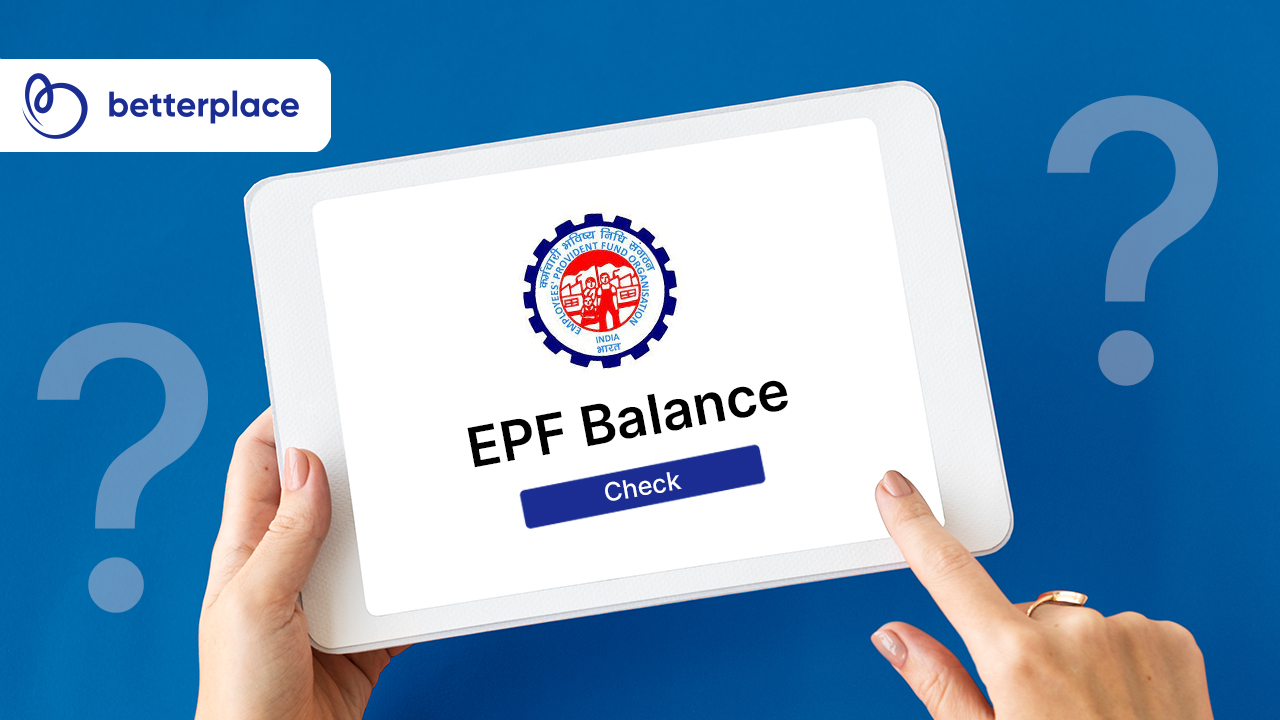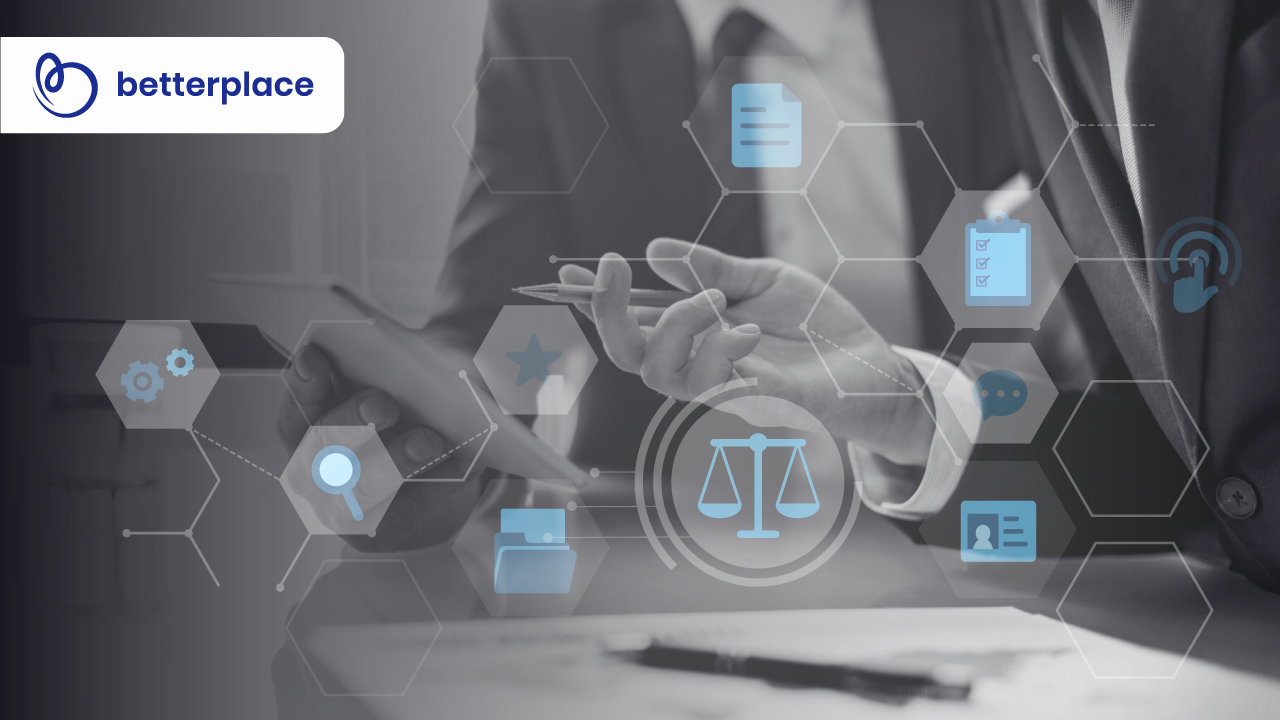Highlights
- What is HRMS
- Why does a company need HRMS?
- Features of Human Resource Management System
- Benefits of a Human Resource Management System
- Tips for selecting the right HRMS
- FAQs
The human resources management system (HRMS) of any company is now more complex and integral than ever before. From managing employee databases to organising events, the HR team handles it all with the right HRMS software. This makes it essential for management to invest in HR management software to make HR procedures as seamless as possible.
What is a Human Resource Management System (HRMS)?
The acronym HRMS stands for Human Resources Management System. It refers to a computer system designed to streamline and automate the human resources department’s administrative tasks and functions.
Human resources management systems collect information about an organisation’s most valuable assets—its employees—and place that data at the fingertips of those who need it. This software enables human resources personnel to track all company activity, automate mechanical tasks, store data collected and use it for analysis. This makes it possible for them to make accurate decisions about company employees.
Understanding HRMS
HRMS software has made accessibility to company resources faster, safer and more effective. What’s more, it can be used to track down employee skills, aptitudes, rewards, attendance logs, leave applications and more.
Another key feature of the HRMS is that it helps the management keep tabs on employees. A few more practical applications of HRMS include payroll management, onboarding and recruitment, storing and saving employee information, keeping records of attendance, evaluation of performance, analysing logistics and making appropriate people-centric decisions for the company.
Why does a company need HRMS?
HRMS has simplified complex tasks for many organisations in India. It’s crucial for HR experts to become more involved in business processes. But due to the structure and size of the company, sometimes it seems difficult to handle all the tasks without having a full-fledged, tech-powered system.
Before integrating HRMS into the system, it is important to assess goals, both short and long-term. Your organisation could gain an advantage by investing in HRMS if any or all of the problems below are addressed.
- Massive workload on the HR department
- Errors in HR compliance leading to financial losses
- Unmanageable distributed workforce
- Ever-increasing employee turnover
- Lack of options for employees to track appraisals
The information kept by the HRMS is sensitive. Therefore, it is crucial to have a set of security measures in place while getting one. One way to enhance security is by providing individual usernames and passwords to the employees. The customised profiles may be accessed by the admin alone. Terminated employees should be barred from accessing HRMS portals with immediate effect upon their resignation.
Top 8 Features (Components) of a Human Resource Management System
A human resource management system (HRMS) is a software program that automates many business functions, including payroll and benefits administration, tracking employee absences, time sheets and scheduling pay raises.
A functional HRMS also offers other customisable features to accommodate your business’s needs.
Given below is a quick round-up of the top 8 features that every HRMS platform must have.
1. Recruitment Administration & Off-boarding
Recruiting employees can be a time-consuming process, but a comprehensive human resources management system can help you save time by streamlining the recruitment process.
In order to hire the best candidates, businesses can post job openings on multiple websites and social media channels, as well as work with external recruiters. An applicant tracking system (ATS), built into an HRMS, is another resource that can help businesses manage their recruitment efforts by automatically accepting or rejecting candidates based on predetermined criteria.
Onboarding can be made easier when companies ensure that the new hires have everything they need to succeed. This will result in the new employees being more productive, which will bring positive results for their company.
When employees leave a company, it can be a time-consuming process. However, an enterprise HRMS can make the exit process as efficient and user-friendly as possible. Some systems like BetterPlace HRMS allow employees to apply for resignations online, receive approval, complete exit surveys, conduct the tasks associated with resignation, and quickly receive exit-related documents.
Resignation enables both the employee and the organisation to move forward without a potentially bitter parting. The employee’s resignation allows an unbiased review of the resigning employee’s performance, which helps the organisation evaluate its long-term goals.
2. Management of The Workforce
A comprehensive human resource management system must integrate a feature that allows organisations to track their employees from the moment they are hired until they retire. This real-time data can help them reach their business objectives faster and even anticipate manpower needs in the future.
With the help of such an HRMS platform, businesses can create a functional employee database that enables access from anywhere when needed. This system provides real-time visibility into the functions employees are qualified for, and it also allows them to be classified by their functional requirements.
By bulk importing employee documents into your database, you can create a seamless data integration system that eliminates data duplication and ensures a flawless experience for end-users. Your HRMS will also offer complete control over employee access to the self-service portal.
A human resources management system should allow bulk importing of employee documents into a data repository so that your HR team can have a seamless data integration system in place that eliminates all the risks of duplicate and redundant data.
Having something like this will ensure a smooth experience for all users. Your HRMS should transfer complete control over to you when it comes to providing workers access to the employee self-service portal.
3. Attendance and Time Regulations
An HRMS (Human Resources Management System) helps companies manage scheduling, attendance tracking, and staffing needs by providing a system for tracking the in and out timings of their employees.
State-of-the-art HRM platforms enable companies to deploy employees across projects, locations, and departments. In fact, many of the top HRMS platforms also alert employees when their schedules and deployments change, or when there is a shortfall in the number of employees.
4. Leave and Time-off Supervision
The hassle of managing leaves can be taken out of your hands for good with an advanced HRMS platform. You can streamline the management of time-offs and all the leaves of your workforce with a configurable leave policy, comprehensive dashboards and reports, and AI-enabled support and dashboards.
Nowadays, top-notch HRMS platforms come with advanced time-tracking software that enables managers to monitor their employees’ time off and the availability of each employee, providing complete transparency into the organisation’s human resources.
5. Workforce Upskilling
Companies work to help their employees grow and develop skills by providing educational content through an HRMS platform that integrates with learning management systems, learning experience platforms, and employee experience platforms.
A customized upskilling platform can be pre-loaded with educational resources, in addition to offering options to upload other materials. The platform can also tie into external systems that manage employee certifications and keep track of these credentials for your organization.
A configurable and AI-powered upskilling platform can allow employees to access a variety of educational resources. What’s more, it can also be integrated with additional training, development and certification systems and keep tabs on any of the achievements, developments, and feedback for your company.
6. Payroll Processing and Management
Compliance, tax management, deductions, benefit plans and other financial aspects of running a business require careful attention to detail.
An HRMS software with compliance management and payroll features can provide employers with an accurate picture of the financial records of their employees, including salary, benefits, allowances, incentives, bonuses, net pay and deductions.
With payroll software built into an HRMS, you can uncomplicate financial workflows and streamline the entire payroll process whilst avoiding hefty fines, penalties, and legal troubles.
7. Performance Assessments
To ensure a productive and harmonious workplace, employers should regularly evaluate the performance of their employees. A human resources management software with a comprehensive and customisable performance management system makes performance evaluations simple and convenient.
Such assessments can help companies identify productive employees and understand which employees excel in their respective domains.
An HRMS can automate the process of giving and receiving performance reviews and feedback. Human resources departments can use these automated systems to collect data on employee performance and provide feedback that is more reliable than what they could get through a traditional paper-and-pencil system of distributing evaluations.
8. Employee Engagement and Recognition
A human resources management system should enable clear communication, provide timely feedback, and focus on employee wellbeing.
A positive workplace environment creates enthusiasm among workers, who are more willing to take on their responsibilities head-on. Timely employee engagement can result in employees feeling valued. Moreover, they end up enjoying their work, which enhances productivity.
To make your employees feel valued and appreciated, you should engage with them and reward them. To cultivate a collaborative, open-minded environment where employees feel trusted and visible, executives should inculcate an approach that values sharing, appreciation, and trust.
An employee-friendly environment generates an atmosphere of innovation, boosts creative accomplishments and keeps top talent on board. With an HRMS platform that incorporates a module for employee rewards and recognition, you can fabricate strategies for a top-notch employee experience.
9 Benefits of a Human Resource Management System
Clearly, all the components and functions of an HRMS platform when put together cohesively can free up crucial resources, especially for the HR department.
Here’s a look at 9 important advantages of having an HRMS platform.
1. Take Productivity Up a Notch
By utilising an AI-powered HRMS platform with an excellent customer service team, you can free up your HR team and help them focus on other tasks that are more important. The data that is captured by HRMS can bring a huge difference to employee productivity and management.
For example, to ensure that maximum efficiency is achieved, you can gather and analyse data that matches employee skillsets with projects, finding the right person for the job.
2. Keep Them Close
The most effective way to increase employee retention is by training new employees.
Human resources management software can help as it provides access to online training that helps workers identify their personal growth needs, improve their skills, knowledge, and efficiency in order to be on the same page as the rest of the team.
3. Forever Compliant
A human resource management system can help a company to comply with central and state regulations when it comes to overtime, labour laws, and other issues that vary from state to state.
With a fine-tuned HRMS platform that effortlessly manages compliance, your company can stay compliant, be aware of changing laws and regulations, and more importantly, bypass hefty penalties and fines for non-compliance.
4. You Know Just Where To Find It
When you put all the information that passes through your Human Resources department in a single database, you can ensure that employees are able to find the details they need while also making sure that no data in transit is misplaced.
5. Re-order Your Organisation
Human resource management systems allow you to manage your workforce by defining departments and teams or establishing hierarchical roles. This leaves employees with a clear understanding of their workflow.
6. Transfer The Complexities
Human-resources management systems provide employees with access to self-service functions that enable them to request time off, inform their employers of absences, and calculate net pay.
They also track employee information such as salaries and compensation, which are important factors when it comes to managing spending. In this way, the HRMS can save both time and energy for employees while providing accurate data.
7. Talent and Cost
With a Human Resources Management System, onboarding new employees is easy. Recruits can receive access to documents about work culture and procedures. Managers can track background checks, employee evaluations and even probationary periods, saving time and costs that might otherwise be higher.
8. Bypass Blunders
Accurate data entry can be a huge challenge for any business. The amount of employee information that needs to be managed, for example, can overwhelm even the most efficient human resources department.
This is especially true in companies that rely on manual processes for record-keeping. By using HRMS software, you can reduce the risk of errors when making crucial decisions for your business. You’ll make fewer mistakes and save money with accurate payroll and benefits management.
9. Better Decision-making
Workforce planning, strategic business decisions, and other functional areas are made easier with the help of HRMS software. This kind of software tracks all kinds of data—including information about individual employees—so that you can make informed decisions for your company.
The costs of paying employees and the number of hours worked by each employee can help you plan projects more easily and accurately, make recruitment decisions, and track turnover to help you retain employees or help them achieve their objectives in life and career.
Tips for selecting the right HRMS
When it comes to HRMS solutions, it is important not to choose a one-size-fits-all approach. The following tips may help you choose the right HRMS for your business.
- It should meet the demands of a growing employee influx
- Keep vital employee information secret and confidential
- Provide accurate employee appraisals and inputs
HRMS not only makes employee management and meeting organisational goals easier, but also creates opportunities for better growth and development of the company. It is therefore vital to get the right HRMS for the company.
For automated HRMS solutions that covers every state of the employee lifecycle, from hire to retire, consider BetterPlace.
FAQs
1. Can HRMS platform provide scalable solutions?
Most HRMS platforms today are developed in-house and provide tremendous flexibility to organisations in terms of scalability. In other words, more modules and features can be added to your existing HRMS platform depending on your specific requirements.
Opt for one that lets you send in your suggestions and requirements for new functionalities.
2. How does an HRMS address security, sharing, and access to data?
An HRMS encrypts sensitive data when the application must handle transactions over a network. Encryption converts the data into another form, making it unreadable by anyone except you and your recipient.
Decryption is the process of converting encrypted data back into its original form. An HRMS encrypts data between servers and client applications.
3. From where do I access my HRMS tool?
You can access HRMS platform from any device (computer, tablet, or phone) with a stable internet connection. Some HRMS tools even allow offline access.
4. If I don’t have a computer or internet facility, how can my HR team implement HRMS?
Today’s HRMS platforms offer both online and offline access to HRMS functionalities. Even if you don’t have a computer, you can utilise your phone or handheld device like a tablet to gain access.
Before investing in any HRMS, ensure that it provides cross-platform, cross-device functionality along with both online and offline access.
5. Can an HRMS platform be linked-up with other tools and software?
Yes. Since HRMS has several modules like background verification, employee performance evaluation, upskilling etc., it can work in tandem with several other tools and software.
Again, to be on the safe side, ask your HRMS partner about the possible integrations that the software can provide.
6. Will I need customer service for my HRMS platform?
An excellent HRMS platform helps to provide timely and accurate support to all customers, regardless of their locations. Its consultants can get in touch with the client in real-time for any kind of support required or maintenance.
Human resources companies offer annual maintenance programs that include technical support for human resources management systems, or they can provide technical support on an individual incident basis. State-of-the-art human resources management systems have 24/7 technical support staff available to assist you with questions throughout the day, either by telephone or electronically.
7. If I invest in HRMS, will my HR team receive some form of training?
HRMS implementations often include training, which can be provided by a partner, if you choose to hire one. This is often a requirement, as your company would need to be trained in the new system before they are able to use it.
Even if an employee leaves and is trained in the HRMS, it’s possible that your partner can train the new employee. Additionally, HRMS tutorial videos and manuals help users learn how to use their new software effectively.









